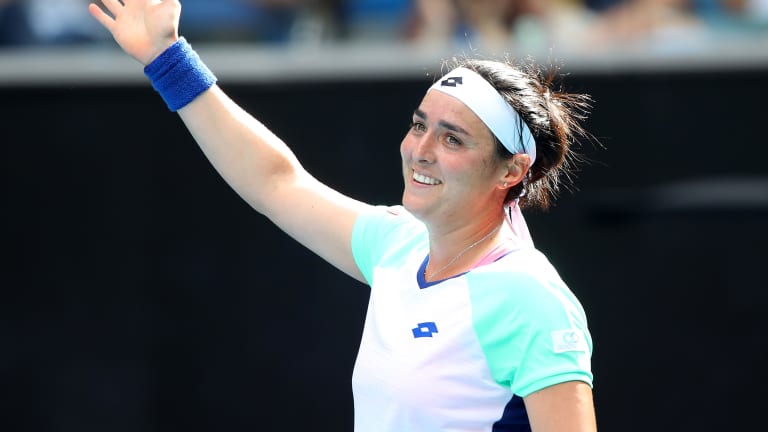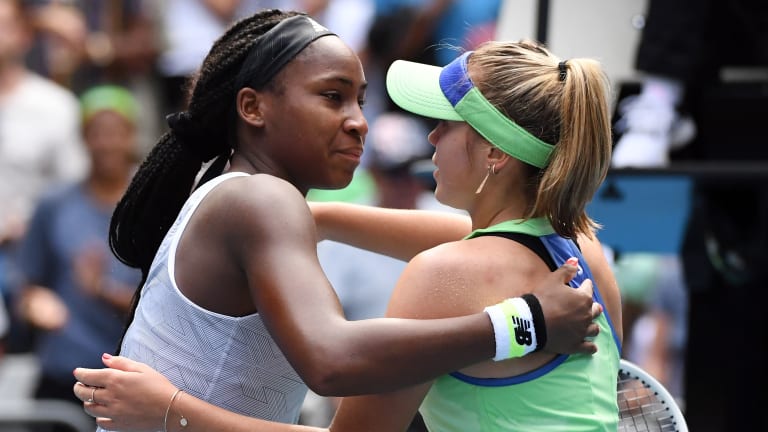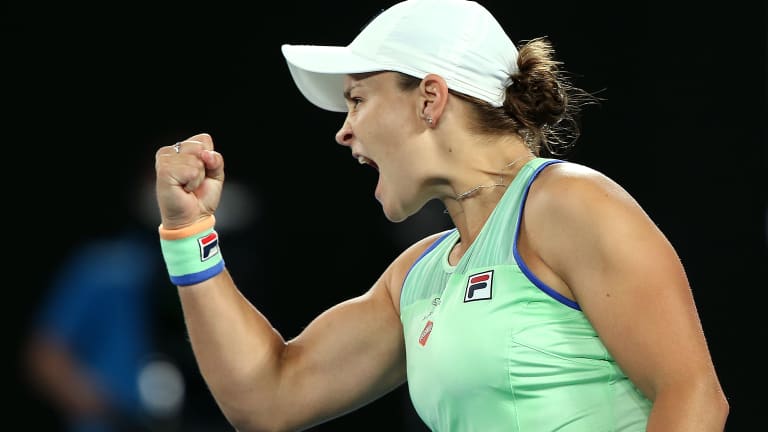What You Missed, Day 7: Where has Ons Jabeur been all of our lives?
By Jan 26, 2020Social
Alison Riske-Amritraj announces birth of first child, daughter Calen Ann Amritraj
By Jul 08, 2024Social
Alison Riske-Amritraj announces she's expecting a baby girl this summer
By Mar 28, 2024Roland Garros
Three To See, Day 3: Azarenka and Andreescu, Monfils and Baez face off; Andreeva, 16, arrives in Paris
By May 29, 2023Social
Alison Riske-Amritraj speaks out after missed Australian Open call goes viral
By Jan 21, 2023Tennis Honors: Roger Federer
Alcaraz, Swiatek among tennis stars tweeting tributes during Roger Federer’s last match
By Sep 24, 2022WTA Nottingham, Great Britain
Alison Riske and Beatriz Haddad Maia reach Nottingham Open final
By Jun 11, 2022Rome, Italy
Just like Rome: USTA National Campus red clay readies Americans for Paris peak
By May 11, 2022Billie Jean King Cup
BJK Cup Preview, U.S. vs. Ukraine: Blending team competition with a spirit of national cooperation
By Apr 15, 2022WTA Dubai, UAE
No coach? No problem for Simona Halep in Dubai
By Feb 14, 2022What You Missed, Day 7: Where has Ons Jabeur been all of our lives?
The 25-year-old Tunisian made a dazzling breakthrough and tried to inspire a world; plus: Kenin showed she can be the future of U.S. tennis, too; and Barty put two hands on the racquet, and got over the hump.
Published Jan 26, 2020
Advertising

What You Missed, Day 7: Where has Ons Jabeur been all of our lives?
© Getty Images
Advertising

What You Missed, Day 7: Where has Ons Jabeur been all of our lives?
© AFP via Getty Images
Advertising

What You Missed, Day 7: Where has Ons Jabeur been all of our lives?
© Getty Images
Advertising

What You Missed, Day 7: Where has Ons Jabeur been all of our lives?